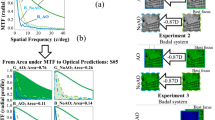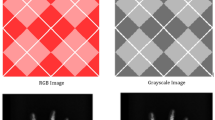Abstract
IN the course of some experiments on Poisson's ratio by Cornu's method1, one of us (B. J. G.) used a photographic method of recording the observed fringes for sodium light. Ilford Thin Film Half Tone Panchromatic plates were used with Johnson's Contrast Developer, and it was noticed that the resulting pattern showed very fine white fringes on a black ground in the negative; comparison with visual observation showed that the recorded fringes were much sharper. It was concluded that this was due to the very high contrast of the photographic process used, and it appeared desirable to make a fuller investigation of this phenomenon. The use of high contrast is well known in the photography of subjects of low intrinsic contrast; but the possibility that variation of exposure would produce markedly different negatives seems to be little known and certainly is not widely used.
This is a preview of subscription content, access via your institution
Access options
Subscribe to this journal
Receive 51 print issues and online access
$199.00 per year
only $3.90 per issue
Buy this article
- Purchase on Springer Link
- Instant access to full article PDF
Prices may be subject to local taxes which are calculated during checkout
Similar content being viewed by others
References
For example, see Champion and Davy, “Properties of Matter”, 72 (London).
Author information
Authors and Affiliations
Rights and permissions
About this article
Cite this article
HOUGH, J., GOLDSMITH, B. Use of High Contrast in the Photography of Interference Fringes. Nature 172, 1105–1106 (1953). https://doi.org/10.1038/1721105a0
Issue Date:
DOI: https://doi.org/10.1038/1721105a0
This article is cited by
Comments
By submitting a comment you agree to abide by our Terms and Community Guidelines. If you find something abusive or that does not comply with our terms or guidelines please flag it as inappropriate.



